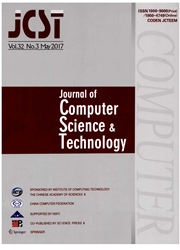

 中文摘要:
中文摘要:
模式与通配符(PMW ) 匹配在生物信息学,信息检索,和模式采矿有大理论、实际的意义。由于通配符的无常,不是仅仅是关于最大的差距灵活性和模式长度指数的所有匹配的数字,但是在 PMW 的匹配的位置也是难的选择。一个一个地数火柴的最大的数字的目的是计算地不能实行的。因此,而非解决通用 PMW 问题,许多研究努力进一步根据不同申请背景在 PMW 以内定义新问题。突破修理数字或允许通配符的一个无界的数字的限制,模式与灵活通配符(PMFW ) 匹配允许用户控制通配符的范围。在这篇论文,我们为 PMFW 在最先进的算法上提供调查,与详细分析和比较,并且在 PMFW 研究和应用讨论挑战和机会。
 英文摘要:
英文摘要:
Pattern matching with wildcards(PMW) has great theoretical and practical significance in bioinformatics,information retrieval, and pattern mining. Due to the uncertainty of wildcards, not only is the number of all matches exponential with respect to the maximal gap flexibility and the pattern length, but the matching positions in PMW are also hard to choose. The objective to count the maximal number of matches one by one is computationally infeasible. Therefore,rather than solving the generic PMW problem, many research efforts have further defined new problems within PMW according to different application backgrounds. To break through the limitations of either fixing the number or allowing an unbounded number of wildcards, pattern matching with flexible wildcards(PMFW) allows the users to control the ranges of wildcards. In this paper, we provide a survey on the state-of-the-art algorithms for PMFW, with detailed analyses and comparisons, and discuss challenges and opportunities in PMFW research and applications.
 同期刊论文项目
同期刊论文项目
 同项目期刊论文
同项目期刊论文
 期刊信息
期刊信息
